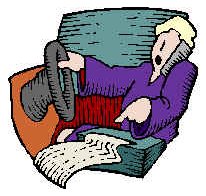Beware the Highway Hypnosis that Plagues Drivers
 ITíS one of the most unnerving experiences in driving: You've been on
the road a while. The highway seems endless ≠ long, smooth, monotonous. The
car interior is warm. You're tired. The radio isn't holding your attention,
and neither is the driving. You stare straight ahead, at kilometres and
kilometres of road. You start to feel your shoulders sag and your eyes
slowly start to close. ITíS one of the most unnerving experiences in driving: You've been on
the road a while. The highway seems endless ≠ long, smooth, monotonous. The
car interior is warm. You're tired. The radio isn't holding your attention,
and neither is the driving. You stare straight ahead, at kilometres and
kilometres of road. You start to feel your shoulders sag and your eyes
slowly start to close.
Abruptly, you open your eyes; jerk up in your seat. You've started to
drift out of your lane, or maybe even off the road. You steer your car back
into the lane, take a few deep breaths, and realize, fearfully, what just
happened. You were asleep.
Fatigue on the road can be a killer. It happens frequently on long
drives, especially long night drives. You may have recognized some warning
signs of fatigue in the foregoing scenario. Other signs of fatigue include
back tension, burning eyes, shallow breathing, inattentiveness, and any kind
of erratic driving, such as drifting, abnormal speed, tailgating, or failure
to obey traffic signs.
One cause of fatigue is alcohol consumption. Alcohol is a depressant, and
a driver doesn't have to be drunk to fall asleep at the wheel. Even one
drink can be enough to induce fatigue.
Another culprit is the nature of todayís highway driving. Most car
interiors have comfortable, cushioned seats in quiet, carpeted,
temperature-regulated environments. Many vehicles have "cruise
control." Most major roads have been engineered to eliminate sharp
curves, hills and bumps. Ironically, these designs for comfort contribute to
falling asleep at the wheel.
Additionally, dull landscapes, the droning of tyres and engines, and the
repetitive patterns of oncoming headlights, trees, poles and highway centre
lines can lead to a dangerous, trance-like state known as "highway
hypnosis", which deadens drivers' senses and slows their reaction time.
Fatigue behind the wheel is a very real danger, even if you've never
experienced it first hand. The National Safety Council of the US offers
these tips for staying awake while you're driving:
- An obvious cause of fatigue is lack of sleep. If you haven't received
seven or eight hours of sleep the night before a trip, you're courting
fatigue. Get enough rest. And don't start a trip late in the day.
Long-distance driving is hard work, and you need to be fresh and alert
- If possible, don't drive alone. Passengers can take turns driving and
also serve as conversation partners to keep you awake
- Avoid long drives at night. The glare of lights, both on your
dashboard and outside your car, increases the danger of highway hypnosis
- Adjust your car's environment so that it helps keep you awake and
alert. Keep the temperature cool, with open windows or air conditioning
in the summer and frugal amounts of heat in the winter. Turn the radio
volume up, and switch stations frequently, but avoid soft,
sleep-inducing music. Do not use cruise control; keep your body involved
with the driving
- Watch your posture. Drive with your head up and your shoulders back.
Tuck your buttocks against the seat back. Legs should not be fully
extended, but flexed at a 45 degree angle
- Take frequent breaks. At least every two hours, stop at a petrol
station, restaurant or rest stop. Get out of the car, walk around or
even jog. Exercise fights fatigue
- In addition to exercise breaks, stop for light meals and snacks. Avoid
alcohol entirely
- Don't allow your eyes to become fatigued or hypnotized. Wear
sunglasses to fight glare (but never wear sunglasses at night)
- Break the monotony. Turn the radio on for a while, then off. Vary
speed levels. Chew gum. Stretch your legs, slap your thighs. Talk to
yourself or sing. Keep your eyes moving
- If anti-fatigue measures fail, and you start noticing the danger signs
of fatigue, then there is only one solution. Sleep. If no hotels or rest
areas are in sight, pull off the road in a safe area that is well lit
and take a nap. Even 20 minutes of sleep might refresh you enough to
keep going until you reach a safe rest area.
Safe driving demands your full attention. If you feel your eyelids
getting heavy, then your next actions may not simply determine whether
you'll stay awake. They might determine whether you'll stay alive.
(Published with permission from the Safety Department,
United States Naval Hospital Rota, Spain)

Related Topic
Sleeping and Driving Don't Mix

 back back
|
 ITíS one of the most unnerving experiences in driving: You've been on
the road a while. The highway seems endless ≠ long, smooth, monotonous. The
car interior is warm. You're tired. The radio isn't holding your attention,
and neither is the driving. You stare straight ahead, at kilometres and
kilometres of road. You start to feel your shoulders sag and your eyes
slowly start to close.
ITíS one of the most unnerving experiences in driving: You've been on
the road a while. The highway seems endless ≠ long, smooth, monotonous. The
car interior is warm. You're tired. The radio isn't holding your attention,
and neither is the driving. You stare straight ahead, at kilometres and
kilometres of road. You start to feel your shoulders sag and your eyes
slowly start to close.